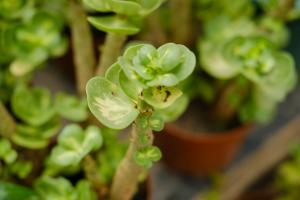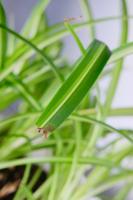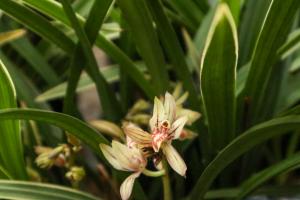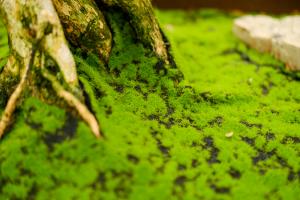What Waxy Substance Helps Plants Retain Water?
Plants have many adaptations that help them survive in a variety of environments, including their ability to retain water. One of the most important adaptations that helps plants retain water is the waxy substance known as cuticle.
The Function of Cuticle
Cuticle is a thin, waxy layer that covers the leaves, stems, and other aerial parts of plants. It is secreted by epidermal cells and is composed of a mixture of lipids and polymers. The main function of cuticle is to prevent water loss from the plant, as it creates a barrier that limits the amount of water that can escape from the plant through the epidermis.
In addition to its water retention properties, cuticle also provides protection against external stresses such as mechanical damage, ultraviolet radiation, and chemical exposure.
The Components of Cuticle
Cuticle is composed of two main components: cutin and wax. Cutin is a complex polymer that is insoluble in water and provides the basis for the structural integrity of the cuticle. The other component, wax, is composed of long-chain hydrocarbons and forms a hydrophobic barrier that helps prevent water loss.
Waxes are generally divided into two types: epicuticular wax and intracuticular wax. Epicuticular wax is present on the surface of the cuticle and forms a thin, uniform layer. Intracuticular wax, on the other hand, is embedded within the cutin layer and forms a thicker, more variable layer.
The Importance of Wax in Water Retention
The wax layer is the most important factor that determines the water-holding capacity of the cuticle. Waxes form a hydrophobic barrier that slows the rate of water loss from the plant, and also prevents the accumulation of excess water on the surface of the leaves. In addition, the wax layer helps prevent the absorption of harmful substances such as heavy metals and pesticides.
Waxes are also important for plant growth and development. They can facilitate the germination of seeds, and help protect young plants from desiccation in a dry environment.
Variations in Cuticle Composition
The composition and thickness of cuticle can vary between different plant species and even between different parts of the same plant. Plants that grow in arid environments generally have thicker cuticles that are high in wax content, while plants that grow in moist environments may have thinner cuticles that are low in wax content. The color and texture of the cuticle can also vary, depending on the type and amount of pigments and waxes present.
Conclusion
The waxy substance known as cuticle is an important adaptation that helps plants retain water and protect themselves from external stresses. By forming a hydrophobic barrier and slowing the rate of water loss, the cuticle plays a critical role in the survival and growth of plants in a variety of environments. Understanding the composition and properties of cuticle can help us develop new strategies for improving the water-use efficiency of crops and conserving water resources.

 how many times do yo...
how many times do yo... how many planted tre...
how many planted tre... how many pine trees ...
how many pine trees ... how many pecan trees...
how many pecan trees... how many plants comp...
how many plants comp... how many plants can ...
how many plants can ... how many plants and ...
how many plants and ... how many pepper plan...
how many pepper plan...
































